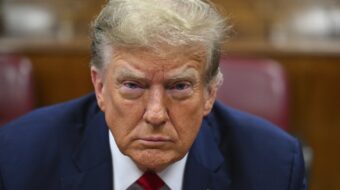The occupiers moved with stealth. They quickly took one patch of green amidst a sea of gray concrete. Tall dark spires loomed over them. Was this Wall Street? No. It was part of the roots of the Occupy movement, maybe its taproot, in a distant land.
Uhuru (Freedom) Park is to Kenya what Central Park is to New York. In the heart of Nairobi, one encounters many trees, footpaths and a lake. It is a large part of the reason Nairobi, with its 3 million people, is known as the Green City in the sun.
By 1989, Uhuru Park was whittled down to just 34 acres. Sprawl, including a road, hotel and golf course, available only to the well-heeled, were the main culprits. Now Freedom Park was targeted for extinction by land-grabbers, abetted by government officials.
Kenyan elites, foreign government donors and the World Bank supported the Times Media Complex. The Green Belt Movement, and their leader Wangari Maathai, would have none of it. Writing to newspapers, government officials and international contacts, she explained the need for this green oasis. The park was a welcome respite for city workers, a site for public meetings and national celebrations, and a play area for city children.
The campaign of public pressure worked. The unwanted development was halted, but at a price. The government evicted the Green Belt Movement from their public offices. President Moi personally attacked Wangari Maathai. He assailed her as not a proper African woman, disrespecting men and unable to follow the role of being seen but not heard. The end of one battle was the beginning of the next.
When the mothers of sons who were jailed because they “spoke out” needed support, they knew who to see and where to go. In February 1992, the mothers and Wangari Maathai occupied Freedom Park. They demanded the release of their sons and all political prisoners. The government remained obstinate. More mothers joined the occupation. Men visited their camp and told of torture at the hands of the Moi government. A sign was erected calling their space in the park Freedom Corner.
More mothers came. The growing movement was met with baton-wielding paramilitary police. Many were injured. The occupiers remained unbowed. They moved their occupation to nearby All Saints Church. While faced with a local media blackout, Wangari Maathai wrote to national and international media connecting the political prisoners issue with the environmental and pro-democracy movements. The growing local movement combined with international pressures saw the release of all political prisoners by early 1993.
All these occupations led to electoral involvement. The Kenyan Green Party was one result. Wangari Maathai was elected to parliament in 2002.
While Maathai passed away this past September, the fighting spirit of the Green Belt Movement and 30 million trees planted in Kenya are an inspiration to occupiers everywhere.
The Green Belt Movement of Kenya saw that the Freedom Park issue extended beyond one of preservation. It involved making government responsible to its citizens. It was a battle against greed and for justice. These themes resonate with occupiers and other movements across our land. As many environmental struggles involve social justice issues at their core, environmentalists here need to see their overlapping interests in the Occupy movement.
Whither the Occupy movement in the USA? With the presidential election looming over 2012, we should take a cue from our Kenyan brothers and sisters. We need to take our analysis of the gross negligence of our financial institutions into the electoral arena. The Occupy movement will continue to shine light on the Wall Street culprits. The candidates who take ownership of this analysis and put forward programmatic solutions will determine support from this independent movement. Occupy the elections. We are here to stay.
Nick Bart is an environmental activist and a participant in Occupy Connecticut.












Comments